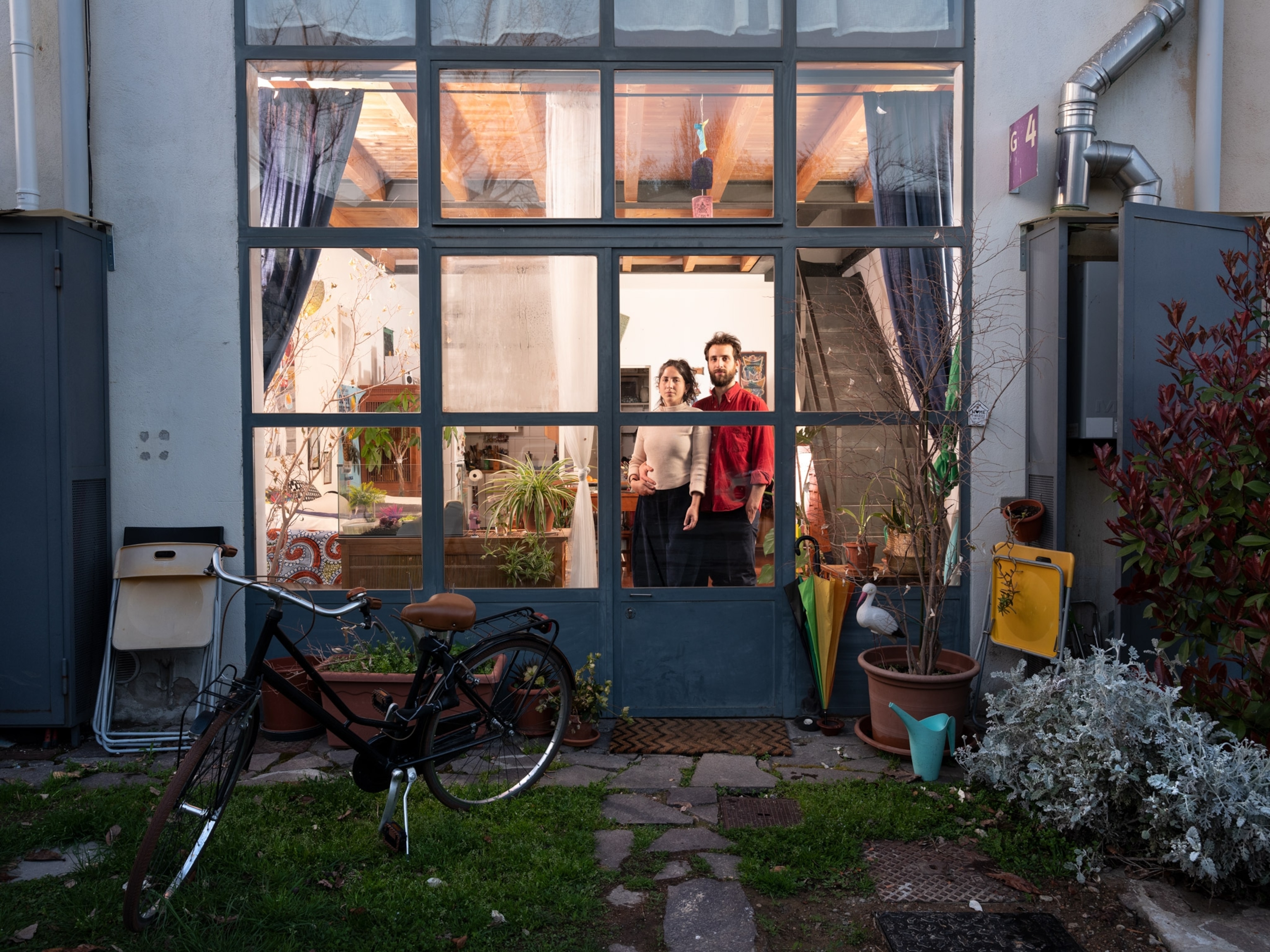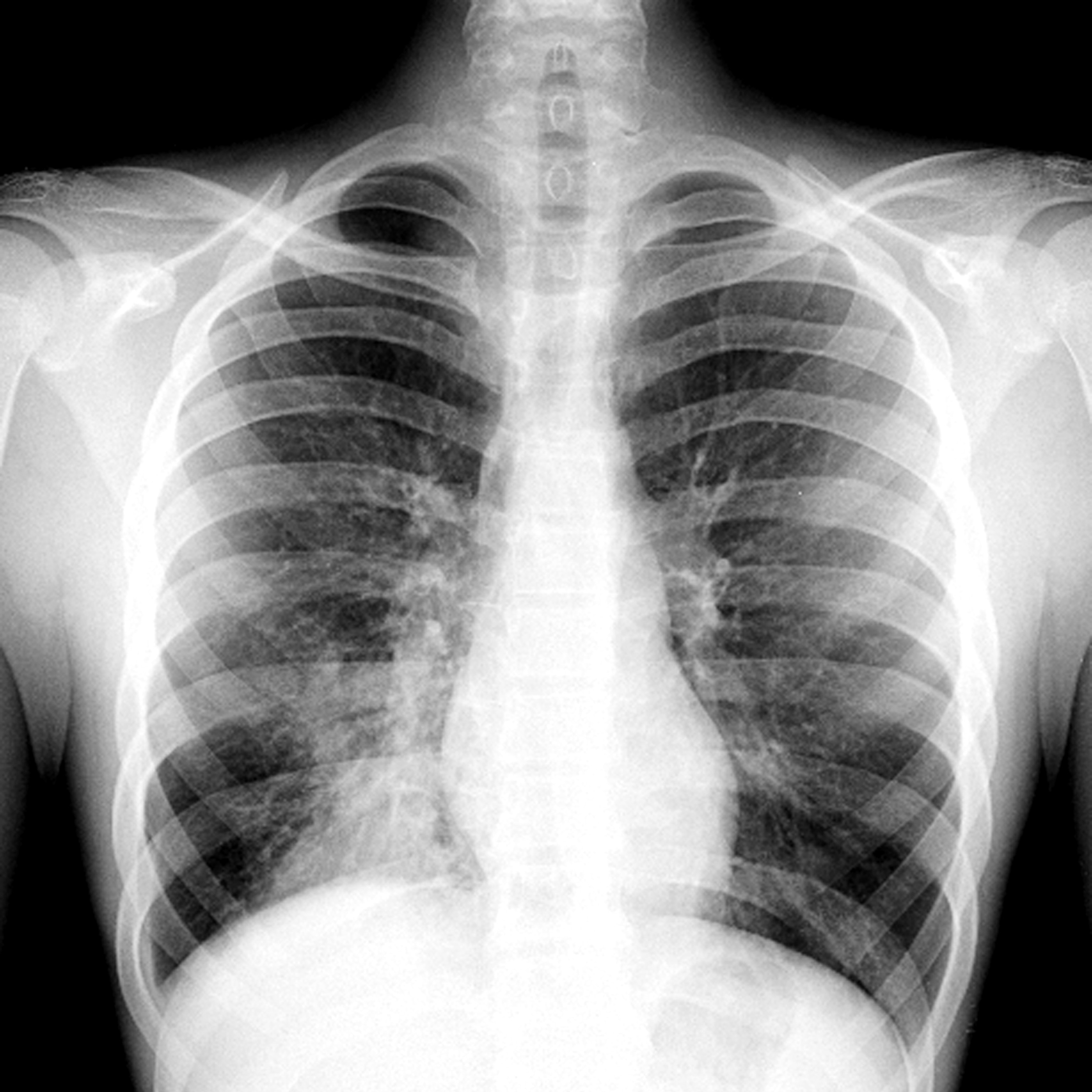
Lonely residents grapple with life indoors as coronavirus shuts Italy down
A writer and photographer in Milan have been documenting the pandemic's spread. Now one of them may be sick.
Milan — I have a fever.
It's a low but persistent fever. It increases in the afternoon and shakes me in the morning, with a violence that is not proportionate to the temperature I have. I have the chills, my muscles hurt, and I have a worrying dry cough. And I'm fatigued.
Photographer Gabriele Galimberti and I have worked days and nights over the past few weeks in Milan. Since the COVID-19 epidemic erupted in Italy in late February, we’ve documented each day of the emergency from its epicenter, our region of Lombardy. We’ve visited morgues and hospitals, looking for stories and images that could tell the rest of the world what’s happening here.
We spoke to virologists, hospital press officers, Chinese businessmen, cemetery overseers. We met city employees tasked with disinfecting the streets. To report on the virus without contracting or spreading it, we wore masks when meeting people and stayed at a safe distance. We used hand sanitizers frequently and washed our hands whenever possible. When we decided to focus our work on the effects of social distancing, Gabriele would photograph the subjects from outside their homes, and I would interview them later by phone. This way, we could ensure that no germs were spread while working within the constraints of a country under lockdown. (See National Geographic’s comprehensive coverage on coronavirus.)

In just one month, Lombardy became the most affected part of the country. Despite increasingly restrictive measures to halt the spread of the virus, it didn’t stop. Hospitals ran out of intensive care beds and oxygen. Doctors have been infected, and no masks and sanitizers are available. As of March 23, Lombardy has had 3,776 COVID-19 deaths and counting. Four days before that, Italy overtook China as the country with the most COVID-related deaths—3,405.

My exhaustion now goes beyond the regular overworked, sleep-deprived feeling. I’m so fatigued that while I was interviewing someone, I felt like my legs were going to give out, and I went into a supermarket to buy some chocolate, thinking I needed sugar.

Those are the symptoms of the coronavirus. I know. I've read them at least a hundred times over the past week. Doctors have been explaining the sypmtoms since the crisis began here on February 21. The quarantine in Milan started two days later. I turned 40 that day, and I had not expected to mark it by counting the infected and the dead. But we had to count, and count, and count again, every night. All the while, we feared for our own relatives and friends.


I have to be tested to know for sure if I have the disease. The entire country has been talking about tests for weeks. Should everyone be tested? And if so, why it is not happening? Does the no-testing mean that there are people around who are asymptomatic and infecting others? And how, if we don't test everybody, can we have reliable data on the number of ill, dead, and recovered people?
Those are the big questions. The small one is: What should I do, besides telling Gabriele, who I’ve been working with for weeks, to stay away from me since he is still well? How worried do I need to be?

There's a number for emergencies, but you’re supposed to call only if you have a high fever. Mine isn't that bad. Besides, the health care system is exhausted—it shouldn’t be clogged with useless requests that take time and energy from those who really need help.
However, last year after a bad car accident, both my lungs collapsed, and I was in sub-intensive care for a long time. Also, I have only one kidney. My vital functions are at higher risk than other people’s. Does this give me more right to call the emergency number, even if my fever isn't high? (These underlying conditions make coronavirus more severe.)


I decide not to. Not out of altruism. Out of realism. Instead, I call an infectious disease specialist, a friend's cousin, who’s a doctor and knows me by name. I list my symptoms and tell him about my lungs. He asks just one question: "Have you been to Bergamo or Brescia?"
Bergamo and Brescia, both within 55 miles of Milan, have the highest number of cases and highest mortality rates. Nobody knows why, but some suspect that safety protocols in hospitals there haven’t been followed. Doctors and nurses started to get infected, and they ended up infecting others at a dramatic pace. The number of deaths is so high that morgues don’t have enough room for all the bodies. Coffins have to be stored in churches and then loaded into army trucks and sent to other regions to be buried.
I tell the doctor that luckily, no, I haven’t been there.

"Most likely, it’s COVID,” he says. "Low-medium symptomatology. The fever's got 48 hours to go up, or it'll stay as this for a long time. If it increases, I'll prescribe you a treatment over the phone. But I have to tell you, I've had a patient with a severe fever for five days, and I haven’t managed to have an ambulance sent to her place. Call me tonight, or tomorrow. Don't worry—there are plenty of cases like you."
I'm not sure if knowing that makes me feel comfortable, but I'll call him.

Every phone call adds to the nightmare we’re living in and to the anxiety of not knowing when we’ll be able to get back to our lives, if ever.
Many Italians have lost family and friends, and many more will in the next weeks. Many have been cured but are still traumatized—and probably will be forever. Many can’t be hospitalized because they aren’t sick enough, and they’re scared, stuck inside their homes. Many, especially those who live alone, will be hurt by such a long solitary confinement. Many will lose their jobs because our economy is collapsing.
And if all this isn’t enough, even if we manage to pretend to get back to some kind of normality one day, the virus of fear will have infected us all. And that, I know, will never go away.

Gabriele Galimberti is an documentary photographer whose books include Toy Stories, In Her Kitchen, My Couch Is Your Couch, and The Heavens. His last story for National Geographic was about dinosaur fossil collectors, in the September 2019 issue. He is based in Florence. Follow him on Instagram @gabrielegalimbertiphoto.
You May Also Like
Go Further
Animals
- Octopuses have a lot of secrets. Can you guess 8 of them?
- Animals
- Feature
Octopuses have a lot of secrets. Can you guess 8 of them? - This biologist and her rescue dog help protect bears in the AndesThis biologist and her rescue dog help protect bears in the Andes
- An octopus invited this writer into her tank—and her secret worldAn octopus invited this writer into her tank—and her secret world
- Peace-loving bonobos are more aggressive than we thoughtPeace-loving bonobos are more aggressive than we thought
Environment
- This ancient society tried to stop El Niño—with child sacrificeThis ancient society tried to stop El Niño—with child sacrifice
- U.S. plans to clean its drinking water. What does that mean?U.S. plans to clean its drinking water. What does that mean?
- Food systems: supporting the triangle of food security, Video Story
- Paid Content
Food systems: supporting the triangle of food security - Will we ever solve the mystery of the Mima mounds?Will we ever solve the mystery of the Mima mounds?
- Are synthetic diamonds really better for the planet?Are synthetic diamonds really better for the planet?
- This year's cherry blossom peak bloom was a warning signThis year's cherry blossom peak bloom was a warning sign
History & Culture
- Strange clues in a Maya temple reveal a fiery political dramaStrange clues in a Maya temple reveal a fiery political drama
- How technology is revealing secrets in these ancient scrollsHow technology is revealing secrets in these ancient scrolls
- Pilgrimages aren’t just spiritual anymore. They’re a workout.Pilgrimages aren’t just spiritual anymore. They’re a workout.
- This ancient society tried to stop El Niño—with child sacrificeThis ancient society tried to stop El Niño—with child sacrifice
- This ancient cure was just revived in a lab. Does it work?This ancient cure was just revived in a lab. Does it work?
- See how ancient Indigenous artists left their markSee how ancient Indigenous artists left their mark
Science
- Jupiter’s volcanic moon Io has been erupting for billions of yearsJupiter’s volcanic moon Io has been erupting for billions of years
- This 80-foot-long sea monster was the killer whale of its timeThis 80-foot-long sea monster was the killer whale of its time
- Every 80 years, this star appears in the sky—and it’s almost timeEvery 80 years, this star appears in the sky—and it’s almost time
- How do you create your own ‘Blue Zone’? Here are 6 tipsHow do you create your own ‘Blue Zone’? Here are 6 tips
- Why outdoor adventure is important for women as they ageWhy outdoor adventure is important for women as they age
Travel
- This town is the Alps' first European Capital of CultureThis town is the Alps' first European Capital of Culture
- This royal city lies in the shadow of Kuala LumpurThis royal city lies in the shadow of Kuala Lumpur
- This author tells the story of crypto-trading Mongolian nomadsThis author tells the story of crypto-trading Mongolian nomads
- Slow-roasted meats and fluffy dumplings in the Czech capitalSlow-roasted meats and fluffy dumplings in the Czech capital







